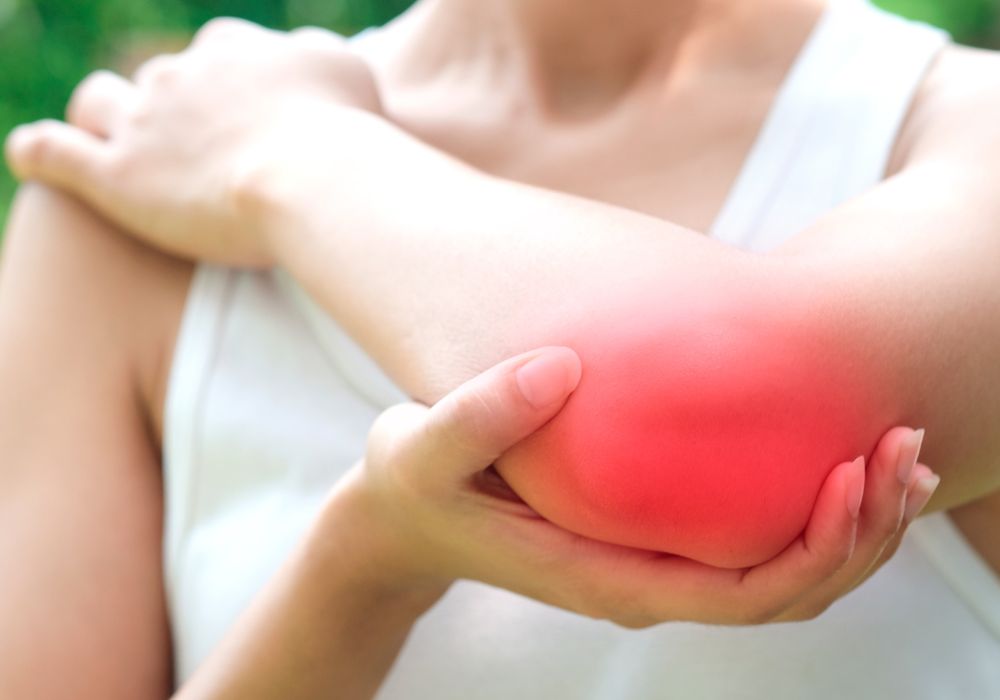Tennis Elbow
What it is?
Causes
The main cause of tennis elbow is repetitive motion and overuse of the forearm muscles. This can be due to activities such as playing tennis, golf, or any other sport or occupation that involves gripping and twisting with the wrist and forearm. It can also result from other repetitive tasks like typing or painting.
In Indian, it is more common among females because indian females are more involved in household activities like washing clothes, lifting bucket, brooming, cooking; which leads to screwing movement of forearm and thus the pain.
Symptoms
1. Pain and tenderness on the outside of the elbow, which may radiate to the forearm and wrist.
2. Weakness and difficulty with gripping or lifting objects.
3. Pain exacerbated by activities that involve the forearm muscles, such as shaking hands, turning a doorknob, or lifting a heavy object.
Diagnosis
To diagnose tennis elbow, a healthcare professional will perform a physical examination and may order imaging tests like an X-ray or an MRI to rule out other possible causes of the pain.
Treatment for tennis elbow usually involves a combination of rest, physical therapy to strengthen the affected muscles, pain relief medications (e.g., anti-inflammatories), and the use of a brace or strap to provide support and relieve stress on the elbow. In severe cases, corticosteroid injections or surgery may be recommended.
Prevention
Prevention measures for tennis elbow include avoiding repetitive movements, using proper form and technique during activities, using equipment that is appropriate for one’s skill level, warming up and stretching before exercise, and taking breaks to rest the forearm muscles.
It’s important to consult with a healthcare professional for an accurate diagnosis and to receive appropriate treatment for tennis elbow.
Causes
The main cause of tennis elbow is repetitive motion and overuse of the forearm muscles. This can be due to activities such as playing tennis, golf, or any other sport or occupation that involves gripping and twisting with the wrist and forearm. It can also result from other repetitive tasks like typing or painting.
In Indian, it is more common among females because indian females are more involved in household activities like washing clothes, lifting bucket, brooming, cooking; which leads to screwing movement of forearm and thus the pain.
Symptoms
1. Pain and tenderness on the outside of the elbow, which may radiate to the forearm and wrist.
2. Weakness and difficulty with gripping or lifting objects.
3. Pain exacerbated by activities that involve the forearm muscles, such as shaking hands, turning a doorknob, or lifting a heavy object.
Diagnosis
To diagnose tennis elbow, a healthcare professional will perform a physical examination and may order imaging tests like an X-ray or an MRI to rule out other possible causes of the pain.
Treatment for tennis elbow usually involves a combination of rest, physical therapy to strengthen the affected muscles, pain relief medications (e.g., anti-inflammatories), and the use of a brace or strap to provide support and relieve stress on the elbow. In severe cases, corticosteroid injections or surgery may be recommended.
Prevention
Prevention measures for tennis elbow include avoiding repetitive movements, using proper form and technique during activities, using equipment that is appropriate for one’s skill level, warming up and stretching before exercise, and taking breaks to rest the forearm muscles.
It’s important to consult with a healthcare professional for an accurate diagnosis and to receive appropriate treatment for tennis elbow.
Patient Testimonials
Orthoderm brings a wealth of knowledge, a depth of understanding, and a shared commitment to patient-centered care.

Manish Agrawal

Karishma Konwar

Hirak Jyoti Sarmah

Manish Agrawal

Karishma Konwar
Contact Dr. Anish Agarwalla
Orthoderm brings a wealth of knowledge, a depth of understanding, and a shared commitment to patient-centered care.

